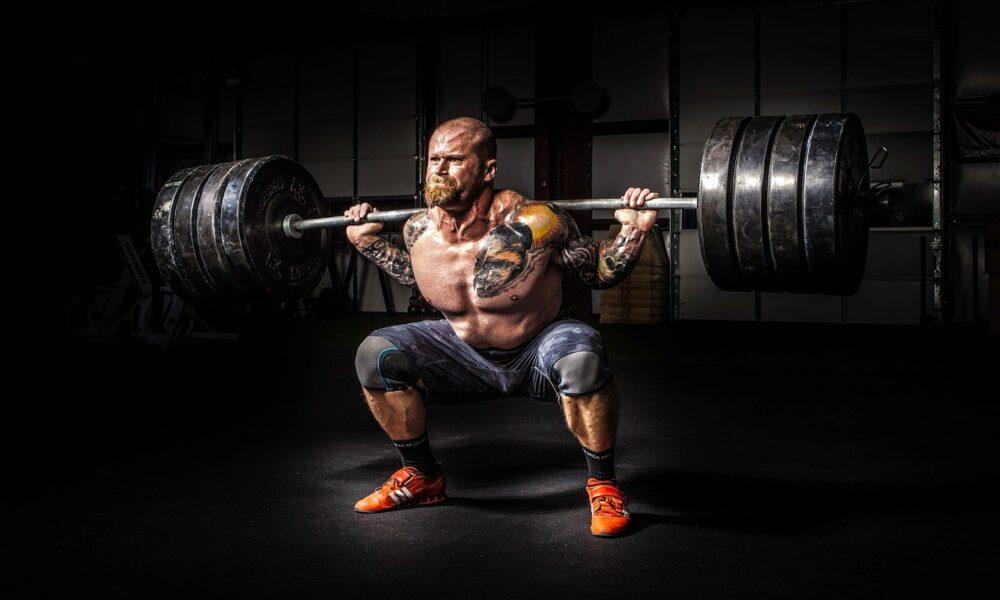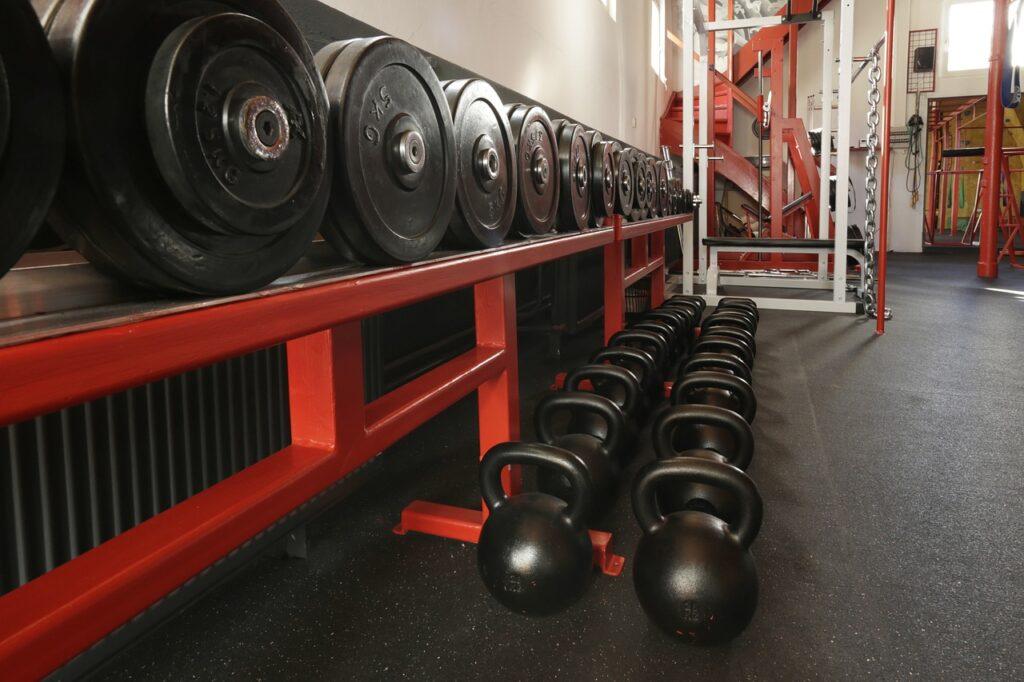

In physical fitness, weightlifting is a transformative powerhouse that goes far beyond the conventional boundaries of exercise. It is a disciplined art, a scientific approach to sculpting the body and building substantial muscle mass.
Beyond its aesthetic benefits, weightlifting is a physical and mental journey that pushes the boundaries of human capability. It helps you lose weight, boost cardiovascular health, lower your blood pressure, improve bone density, and reduce your risk of death from cardiovascular disease.
With its roots deeply embedded in strength training, weightlifting has emerged as the ultimate catalyst for muscular growth, driving individuals to push their limits to unlock the incredible potential within.
But what exactly makes weightlifting such a potent muscle-building tool? In this, we delve into the profound mechanisms through which weightlifting stimulates muscle growth and shapes individuals into their best versions.
The Physiology of Muscle Growth
The physiology of muscle growth involves a complex series of physiological processes that occur in response to resistance exercise training.
While many muscles in your body contribute to muscle growth, we will discuss skeletal muscles. It is the most adaptable tissue in your body, especially regarding muscle growth.
When you perform challenging resistance exercises, such as weightlifting, and bodyweight, your muscles undergo mechanical stress and damage within muscle fibers. This damage and tension activate the satellite cells outside the muscle fibers. The satellites then fuse to repair the damage, increasing the number of nuclei within them, resulting in overall muscle hypertrophy (growth).
Muscle growth also occurs when the rate of muscle protein synthesis exceeds the rate of muscle protein breakdown. Following resistance exercise, muscle protein synthesis increases to repair damage and build new muscle proteins while maintaining muscle breakdown. This leads to a net gain in muscle protein content, contributing to muscle growth.
While all these adaptations happen, muscle growth occurs during the recovery phase following exercise. Proper rest and recovery allow for muscle repair, protein synthesis, and adaptation to the training stimulus.
There are three primary mechanisms that contribute to muscle growth:

3 Mechanism That Facilitates Muscle Growth
There are three primary mechanisms that contribute to muscle growth. They include the following:
1. Metabolic Stress Mechanism
Metabolic stress refers to the accumulation of metabolic byproducts, such as lactate, hydrogen ions, and creatine phosphate, during intense resistance training.
When performing strength training exercises, especially with higher repetitions and shorter rest periods, you create metabolic stress in the muscles. This leads to an accumulation of metabolites such as lactate, hydrogen ions, and other by-products.
Metabolic stress triggers an anabolic response, including increased muscle protein synthesis and growth hormone release, promoting muscle growth.
2. Mechanical Tension Mechanism
Mechanical tension refers to the force generated on the muscle fibers during resistance training exercises.
Initially, the recruitment of muscle fibers occurs in a specific order, starting with the smaller and less powerful motor units and progressing to larger ones.
When you lift weights or apply resistance to your muscles, it creates tension within the muscle fibers. This tension forces the muscles to generate force to overcome the resistance, causing changes in the muscle that stimulate muscle fibers to adapt and grow in response to the load placed upon them.
Satellite cells are dormant muscle stem cells located outside the muscle fibers. In response to mechanical tension, satellite cells become activated. They fuse with existing muscle fibers or each other, donating their nuclei to the fibers. Incorporating additional nuclei enhances the protein synthesis capacity of the muscle fibers and contributes to muscle growth.
3. Muscle Damage Mechanism
As mentioned earlier, intense resistance training causes microscopic damage to muscle fibers. This damage triggers a response from your body, such as the activation of satellite cells and increased protein synthesis to repair and rebuild the muscle tissue, leading to muscle growth.
Also, in response to muscle damage, your body initiates an inflammatory response. Inflammatory cells, such as macrophages. They are recruited to the damaged area to release various growth factors and cytokines that play a role in the subsequent repair and growth processes.

How to Build Muscles
Building muscles, also known as muscle hypertrophy, involves a combination of weight lifting, proper nutrition, cardio, hormones, and adequate recovery.
How to Build Muscles With Strength Training (Weightlifting)
Engage in a regular strength training program that includes a variety of exercises targeting all major muscle groups. This involves weightlifting, bodyweight, resistance bands, or machine workouts such as squats, deadlifts, bench presses, rows, and pull-ups.
You don’t need many hours in the gym to build muscles. Weight training for 20 -30 minutes 2 to 3 times a week should be good enough to give you results.
Even though you might not notice gains immediately, muscular growth is still happening. Every strength training exercise stimulates protein synthesis 2 to 4 hours after your workout, which helps promote muscle growth.
Aim for 8 to 15 repetitions in a row, followed by a minute of rest, and then repeat the same set. Ensure there is a balance between sets, reps, and weight that challenges your muscles without compromising form.
In muscle building, there is a time also when your muscle stops growing or reaches a plateau stage. This happens mostly when you fail to progressively increase the demands placed on your muscles over time. The muscles adapt to the stress or demand placed on them and reach a point where further progress slows down or stops.
To overcome the plateau and stimulate muscle growth focus on progressive overload in your lifting. Consistently challenge your muscles by gradually increasing your exercise intensity, lifting heavier weights, performing additional repetitions, or adding more sets.
It is training volume (number of reps and sets and intensity level) that makes a change in muscle building, not the number you perform a workout or train muscles.
A good rule of thumb is to choose a weight that causes your muscles to fatigue after 12 to 15 repetitions or reps. Then when weights become too austere, gradually increase to the next level above.
Hormones: How it Affects Muscle Growth
Several hormones also play essential roles in building muscle. Testosterone, growth hormone, and insulin-like growth factors (IGFs) are essential anabolic hormones that stimulate muscle protein synthesis.
Testosterone hormones increase muscle protein synthesis, leading to the build-up of muscle proteins and muscle hypertrophy. It also enhances satellite cell activation, facilitating muscle repair and growth.
IGF-1 promotes muscle protein synthesis by activating specific signaling pathways within muscle cells. It increases the uptake of amino acids, the building blocks of proteins, into muscle cells, leading to enhanced protein synthesis and, ultimately muscle growth.
IGF-1 also stimulates the proliferation and differentiation of satellite cells responsible for muscle repair and growth.

Diet for Muscle Growth
Proper nutrition is essential for building muscle. Ensure you consume a balanced diet that includes adequate protein, the primary nutrient for muscle repair and growth.
Aim for approximately 0.8-1 gram of protein per pound of body weight daily. Protein sources include lean meats, poultry, fish, eggs, dairy products, legumes, and plant-based sources like tofu and quinoa.
Carbohydrates are the primary fuel source for exercise and can support intense workouts. Include complex carbohydrates like whole grains, fruits, vegetables, and legumes in your diet. These provide sustained energy and support glycogen storage, vital for fueling workouts and optimizing muscle recovery.
Staying hydrated is also crucial for optimal muscle function and growth. Water is essential for various physiological processes, including nutrient transport, waste removal, and maintaining proper muscle cell function. Aim to drink enough water throughout the day to stay adequately hydrated.
Don’t neglect dietary fats, as they are essential for hormone production and overall health. Include sources of healthy fats such as avocados, nuts, seeds, olive oil, and fish oil. These fats provide essential nutrients and contribute to overall energy intake.
Cardio and Muscle Growth
Cardiovascular exercise, often called “cardio,” primarily focuses on improving cardiovascular fitness and endurance by engaging in activities that increase heart and breathing rates.
While cardio exercises offer numerous health benefits, they are not the primary method for building muscle mass. However, cardio workouts can indirectly support muscle growth by improving overall fitness, promoting recovery, and aiding in weight management.
Cardiovascular exercise strengthens the heart, improves blood circulation, and enhances oxygen and nutrient delivery to muscles. This improved blood flow can support muscle recovery and provide the necessary nutrients for muscle-building.
Cardio higher-intensity activities like running, swimming, or high-intensity interval training (HIIT) can stimulate the release of growth hormone, which supports muscle growth. Intense cardio sessions can also increase overall energy expenditure, helping to create a calorie surplus necessary for muscle growth.
Resting and Recovery
During exercise, especially intense strength training or weightlifting, muscle fibers experience tears and damage. Rest periods allow the body to initiate the repair process and rebuild more muscular and larger muscle fibers.
Intense exercise also depletes the body’s energy stores, such as muscle glycogen (carbohydrate stored in muscles) and ATP (adenosine triphosphate). Rest periods allow these energy stores to be replenished, ensuring you have enough energy for subsequent workouts and maintain optimal performance.
Adequate rest and proper nutrition provide the necessary time and resources for muscle recovery and protein synthesis, leading to muscle growth and increased strength.
Conclusion: How Do Muscles Grow?
Weightlifting is a highly effective method for building muscle. Resistance exercise, proper nutrition, and weightlifting stimulate the physiological processes necessary for muscle growth and adaptation.
The mechanical tension placed on the muscles during weightlifting exercises triggers a cascade of cellular responses, including muscle protein synthesis and activation of satellite cells. These processes lead to an increase in muscle fiber size, protein content, and overall muscle mass.
Weightlifting also stimulates the release of anabolic hormones such as testosterone, growth hormone, and insulin-like growth factors, further enhancing muscle protein synthesis and contributing to muscle growth.
However, it is essential to note that weightlifting alone is not sufficient for optimal muscle growth. Proper nutrition, including adequate protein intake, healthy fat, and carbohydrates, provides the necessary fuel and building blocks for muscle repair and growth.
Rest and recovery are equally vital, allowing the muscles to repair and adapt to the training stimulus, preventing overtraining, and promoting optimal muscle growth.






















You must be logged in to post a comment Login